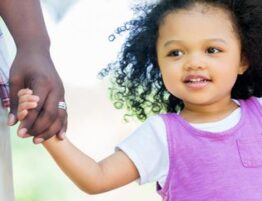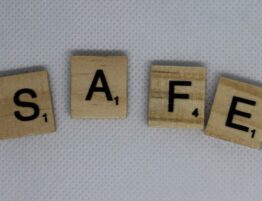
Every Easter my brother, sister, and I got brand new and coordinating Easter outfits and baskets. My mom wasn’t the kind of mom who baked cookies and did crafts with us. In today’s terms, she wouldn’t have been a “Pinterest Mom.” I mean, she had three kids in four years (and added a fourth the year after this picture was taken. Suuurprise!) But she made a big deal about Easter. And because of that, I look forward to Easter as an adult. It doesn’t carry the pomp and splendor (read: pressure) of Christmas, but it’s a sweet holiday—one with traditions and activities I’ve passed down to own my kids.
So how do we do that? How do we create Easter traditions for our children that will not only create fun and fond memories, but also reinforce the levity of the day itself? Here are a few ideas:
Preschoolers – Resurrection Rolls
If there’s one thing every preschooler loves, it’s marshmallows. And this activity calls for plenty of them. You’ll also need crescent rolls, cinnamon and sugar (or red sprinkles), and melted butter.
Before you get started with the supplies, begin by sharing the Easter story through the Bible. The Jesus Storybook Bible is a great one for preschoolers. As you complete each step of the Resurrection Rolls, remind your child about what you just read.
Once you’re finished reading, spread out your crescent roll triangles on a baking sheet. These triangles represent the tomb Jesus was buried in. Next, show your child how to roll one marshmallow into the butter, and then into the cinnamon and sugar. Explain that this represents Jesus’ body being prepared for burial with oil and spices. Next, allow your child to place one marshmallow in each crescent roll, wrap it up, and press the edges together so the roll in completely sealed. This represents the tomb being sealed with a stone. Bake the crescent rolls according to the package’s directions.
After the crescent rolls cook and cool off, help your child peel open one of the rolls. The marshmallow is gone! Just like Jesus’ body!
While the crescent rolls cook and cool, you could always read a few Easter books with your child. A personal favorite of my preschooler is The Berenstain Bears and the Easter Story by Jan and Mike Berenstain.
Elementary-Aged – Resurrection Eggs
You can either buy a set of these online (Amazon carries them), or you can make your own set. Basically, it’s an egg carton filled with plastic eggs. Inside the eggs are:
Egg #1: Oyster cracker (or bread) – Matthew 26:26
Egg #2: Silver coins – Matthew 26:14-16
Egg #3: Purple cloth – Matthew 27:28
Egg #4: Thorns – Matthew 27:29
Egg #5: Rope – Mark 15:15
Egg #6: Cross – John 19:16-17
Egg #7: Nail – John 19:18
Egg #8: Sign that says, “This is the king of the Jews.” – Luke 23:38
Egg #9: Sponge (with vinegar) – Matthew 27:48
Egg #10: Cloves or spices – Luke 23:5-6
Egg #11: Rock – Matthew 27:59-60
Egg #12: Empty – Matthew 28:55-56
You can either walk your child through each egg and explain the contents yourself, use the scripture above, or you can purchase a book to help you. Benjamin’s Box, The Story of the Resurrection Eggs by Melody Carlson is a great option. If your child is already familiar with the Easter story, maybe ask them to walk you through the eggs.
If you want your child to read the Easter story to you, I love the Adventure Bible for Early Readers for this age group!
Teens – Foot Washing
This one’s harder than the rest, isn’t it? Because it requires humility. Because it requires asking our teenagers to do something that they might not feel comfortable doing. But I think it can be a powerful act of love and service.
You could start by reading the story of Jesus washing the Disciples’ feet in John 13:1-17. Talk about how Jesus washed their feet just before he was arrested and crucified. He washed the Disciples’ feet to demonstrate graciousness and humility. He wanted to teach His Disciples to serve one another—a powerful lesson as they all set out to share the Gospel to the entire world.
With a warm water and basin, wash your teenager’s feet. When you’re finished, they can either wash your feet, or a sibling’s feet. If they don’t feel comfortable doing so, don’t push them. The goal is to demonstrate the love of Christ to your teenager, and to encourage them to serve others as Jesus served us.
Easter is more than new dresses and baskets of candy. It’s a time to pause, to help our children pause, and reflect on the meaning of Easter. Of the sacrificial love displayed on the cross—a love we can share with our families, and with others, too.





